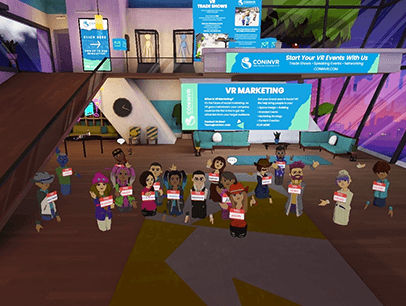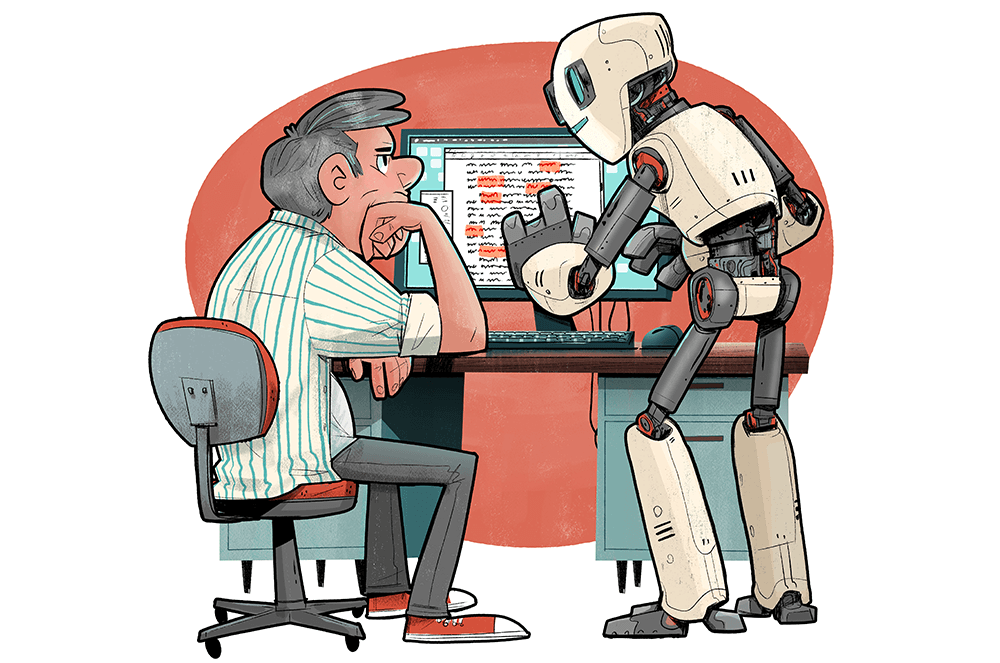
The late physicist Stephen Hawking once said, “The development of full artificial intelligence could spell the end of the human race. It would take off on its own and redesign itself at an ever-increasing rate. Humans, who are limited by slow biological evolution, couldn’t compete and would be superseded.”
Despite its rapid rise, artificial intelligence (AI) hasn’t yet taken off on its own, although it seems to be everywhere. AI is used in smart home devices, navigation apps, rideshare apps, facial recognition, spam filters, and more. You can even use AI to create and practice speeches.
“[AI] can help you learn about a topic in a way that a textbook can’t.”
–Geoff PetersAs a communication coach, I’ve been successfully incorporating AI in my work with clients. Using AI for some aspects allows me to pay closer attention to the finer details of public speaking, like tone and audience connection, while it catches filler words and phrasing.
AI can’t replace your creative ideas or personal experiences, but it can enhance them and help you develop as a speaker. Here are four ways you can use AI to impact your next presentation:
1 Streamline research and content creation.
In November 2022, the company OpenAI launched an AI-powered chatbot, ChatGPT (Chat Generative Pre-trained Transformer), that can answer questions, write essays and poems, and more.
You can use ChatGPT for fun and to brainstorm, research, and create speech content. For example, I entered the prompt “Why do some people fear artificial intelligence? Provide the definition of artificial intelligence. Support with historical examples, pop-culture references, and cite 3-5 resources.” In seconds, ChatGPT spit out three reasons, plus examples and references. You can see the result in this demo video.
“ChatGPT is like having a personal mentor that you can ask questions,” says Geoff Peters of Best Run Toastmasters Club in Vancouver, British Columbia, Canada, who introduced the use of AI for speechwriting to his club. “It can help you learn about a topic in a way that a textbook can’t. If you don’t understand something, you can ask it to clarify.”
ChatGPT has limitations. Notably, it only has about an 85% accuracy rating, meaning it might not provide the most accurate information. It also has limited knowledge based on the most recent data it is trained on.
“‘Consider the source’ is what I advise my students,” says Matt Abrahams, a lecturer in organizational behavior for Stanford Graduate School of Business. “You can use the tool to point you to information, but then you have to use your critical-thinking skills to assess the veracity of what you found.”
2 Design slides in minutes.
You may already have access to tools that can design professional-looking slides in seconds. PowerPoint Designer creates multiple design options for slides, as shown in this how-to demo video. Canva’s AI design tool Magic Design generates several template designs for multi-slide presentations from a single prompt, as shown in this how-to demo video.
3 Create unique images.
Rather than spending hours searching for an appropriate image or creating a custom image, you can quickly create an image using an image generator such as DALL-E. Images are generated from prompts that specifically address the points you want to make in your presentation, saving you time while providing unique, relevant images, royalty free.


Examples:
Prompt: A man and a woman holding hands while scuba diving among colorful tropical fish in the style of Avatar movies.
Another prompt: An oil painting of the earth from space, with the sun rising behind the earth, in the style of Vincent van Gogh.
4 Get speech feedback.
AI tools can supplement speech creation and practice, but they don’t replace writing your own speech, presenting in front of a live audience, receiving feedback from your club members, or performing functionary roles in a Toastmasters meeting. AI can’t fully replicate the experience of presenting in front of people as it can’t provide the immediate feedback that an audience does (body language, facial expressions, and verbal responses).
Using AI to perform meeting roles also reduces learning opportunities. While AI may be efficient at counting a speaker’s filler words, having a member perform the Ah-Counter role in a meeting improves the Ah-Counter’s listening skills and increases their awareness of filler words.
However, there are ways AI can enhance your club meetings. Peters offers an example: “When it was International Women’s Day, the Topicsmaster asked ChatGPT, ‘What are some questions to ask on International Women’s Day?’ ChatGPT came up with a list of 10 great questions, such as, ‘How can we ensure access to education and health care for women worldwide?’”
While AI can’t replicate your personal experiences, if you’re stuck coming up with Table Topics questions or need help expanding on a speech topic, AI can help. In time, using AI to enhance speeches may be like using a calculator to do math.
Diane Windingland, DTM is a presentation coach from Spring, Texas, and a member of three clubs: Frankly Speaking Toastmasters in Spring, Texas, and PowerTalk Toastmasters and Readership Toastmasters, both in Minnesota. Learn more at virtualspeechcoach.com.







